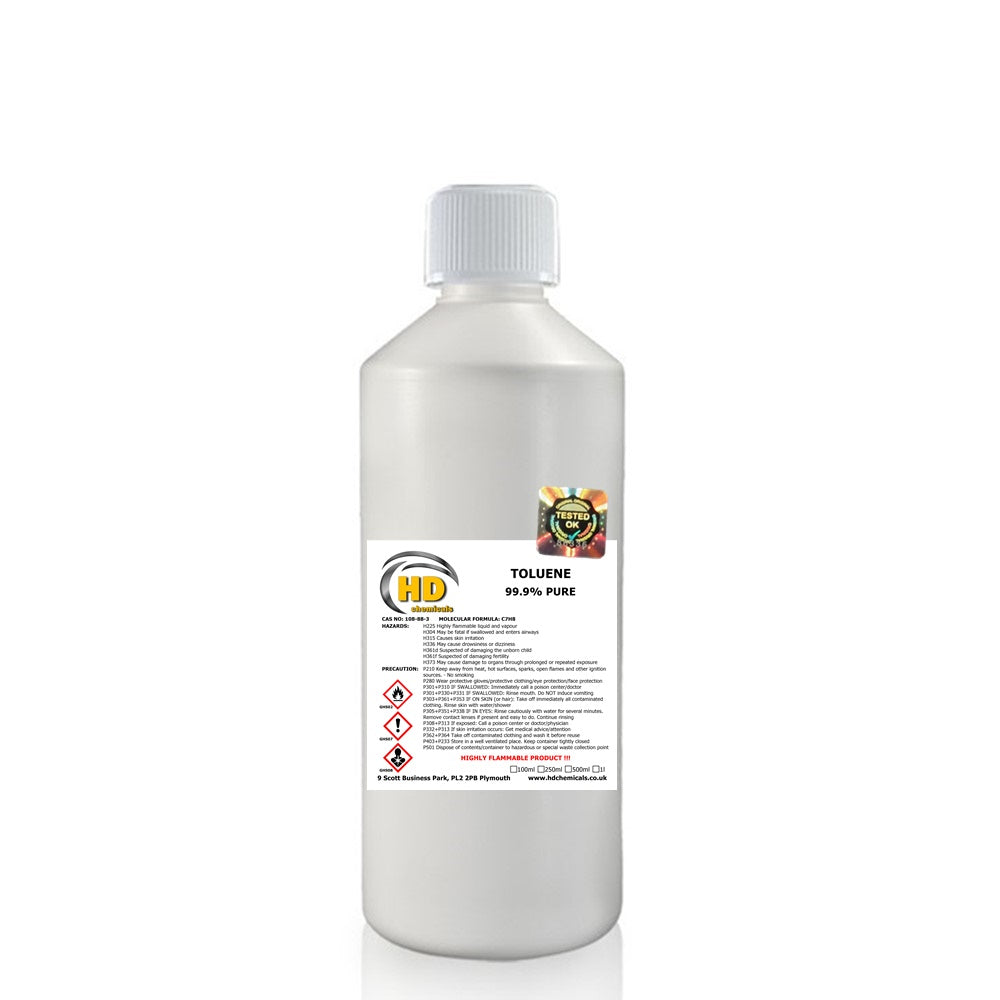Toluene is a strong solvent and can be effective in removing a variety of paints, including:
-
Oil-based paints: Toluene is particularly effective in removing oil-based paints. It can break down the paint film, making it easier to scrape or wipe away.
-
Enamel paints: Toluene is commonly used to remove enamel paints, which are often oil-based.
-
Varnishes and lacquers: Toluene can dissolve varnishes and lacquers, making it useful for stripping these finishes from surfaces.
-
Certain adhesives and glues: Toluene is sometimes used to remove adhesives and glues, especially those that are solvent-based.
However, it's important to note that toluene may not be as effective on water-based paints. Water-based paints, such as latex or acrylic paints, have different chemical compositions, and toluene may not break them down as effectively. In fact, using toluene on water-based paints could lead to smearing and spreading rather than effective removal.
Always test a small, inconspicuous area first to ensure that toluene is compatible with the specific type of paint you're trying to remove. Additionally, be aware that toluene is a strong chemical, and its use should be approached with caution, taking into consideration safety guidelines and proper ventilation. If you're unsure about the type of paint on a surface or how to proceed, it's recommended to seek professional advice.
Here's a step-by-step guide on how to remove paint using toluene:
Materials and tools needed:
- Toluene
- Safety gloves
- Safety mask or respirator
- Eye protection
- Old clothes or coveralls
- Ventilation (work in a well-ventilated area or use an exhaust fan)
- Scrapers or putty knives
- Rags or absorbent material
Step 1: Safety precautions
- Put on safety gloves, a mask, and eye protection to protect yourself from exposure to toluene.
- Wear old clothes or coveralls to avoid staining your regular clothes.
- Work in a well-ventilated area, preferably outdoors, or use an exhaust fan to ensure proper ventilation.
Step 2: Test compatibility
- Before applying toluene to the entire surface, test a small, inconspicuous area to ensure it does not damage or discolor the material.
Step 3: Remove loose paint
- Use a scraper or putty knife to remove any loose or peeling paint from the surface. This will make the paint removal process more effective.
Step 4: Apply toluene
- Apply a small amount of toluene to a clean cloth or rag.
- Gently rub the painted surface with the toluene-soaked cloth. Allow the toluene to penetrate the paint.
Step 5: Scrape off softened paint
- After the toluene has had time to soften the paint (usually a few minutes), use a scraper or putty knife to gently scrape off the softened paint.
- Work in small sections to prevent the toluene from evaporating before it has a chance to soften the paint.
Step 6: Repeat if necessary
- If there are multiple layers of paint or stubborn areas, repeat the process until the desired level of paint removal is achieved.
Step 7: Clean the surface
- Once you have removed the paint, clean the surface with a clean cloth and a mild detergent to remove any remaining toluene residue.
Step 8: Dispose of materials properly
- Dispose of used rags and materials according to local regulations for hazardous waste.
Important Tips:
- Work in a well-ventilated area to minimize inhalation exposure.
- Avoid contact with skin and eyes. In case of contact, rinse thoroughly with water.
- Keep away from open flames and sparks, as toluene is highly flammable.
- Read and follow all safety guidelines and recommendations on the toluene container.
Remember, it's essential to prioritize safety when working with any chemical, and using toluene should be done with caution and adherence to proper safety procedures. If you're unsure or uncomfortable using toluene, consider alternative paint removal methods or consult with a professional.

